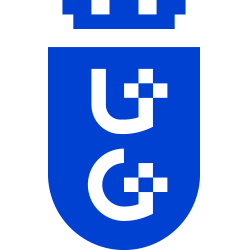https://orcid.org/0000-0002-6160-9982

ul. Bażyńskiego 1a 80-952 Gdańsk
Polska
ISNI ID: 0000 0001 2370 4076
GRID ID: grid.8585.0
Radosław Grześkowiak
Romanica Cracoviensia, Numero speciale (3), Tom 23 (2023), s. 379-389
https://doi.org/10.4467/20843917RC.23.040.18880Radosław Grześkowiak
Rocznik Przemyski. Literatura i Język, 2 (28) 2024, 2024, s. 241-250
https://doi.org/10.4467/24497363RPLJ.24.018.20544Radosław Grześkowiak
Terminus, Tom 21, zeszyt 2 (51) 2019, 2019, s. 145-195
https://doi.org/10.4467/20843844TE.19.015.11189Radosław Grześkowiak
Terminus, Tom 20, zeszyt 4 (49) 2018, 2018, s. 463-498
https://doi.org/10.4467/20843844TE.18.020.10420Radosław Grześkowiak
Terminus, Tom 21, zeszyt 1 (50) 2019, 2019, s. 1-39
https://doi.org/10.4467/20843844TE.19.001.10501Radosław Grześkowiak
Wielogłos, Numer 3 (13) 2012, 2012, s. 173-180
https://doi.org/10.4467/2084395XWI.12.014.0869
THE DESIDERATUM OF AN EDITOR OF OLD LITERATURE: A GLOOMY VOICE
The article discusses the most important needs of the scholarly editing of old Polish literature (new model of critical edition, the rules of transcription, new manual editing, the assessment of editions etc.).
Radosław Grześkowiak
Terminus, Tom XIV zeszyt 25 (2012), 2012, s. 287-334
https://doi.org/10.4467/20843844TE.12.015.0478Radosław Grześkowiak
Terminus, Tom 19, zeszyt 3 (44), 2017, s. 693-703
Omówienie rozprawy Justyny Kiliańczyk-Zięby Sygnety drukarskie w Rzeczypospolitej XVI wieku. Źródła ikonograficzne i treści ideowe, Kraków: Wydawnictwo Societas Vistulana, 2015, ss. 344)
Radosław Grześkowiak
Terminus, Tom XIV zeszyt 25 (2012), 2012, s. 47-68
https://doi.org/10.4467/20843844TE.12.002.0465Radosław Grześkowiak
Terminus, Special Issue 1 (2019), Special Issues, s. 1-29
https://doi.org/10.4467/20843844TE.19.024.11285Radosław Grześkowiak
Terminus, Tom 24, zeszyt 1 (62) 2022, 2022, s. 1-23
https://doi.org/10.4467/20843844TE.22.002.15231